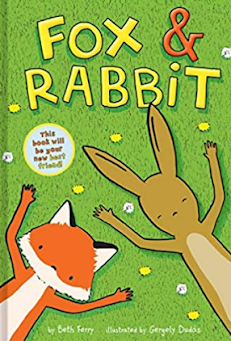Board Books
This week, we're looking at Board Books. I'll be posting one from each of the following categories with comments on them. These are some of my favorites, as my children are reading through these and Picture Books currently. Honestly, even once the kids are past these books, we love some of them so much, we will likely keep them for years.
- Alphabet book
Pandas Love Pickles by Liz Lynch, published in 2017, is an alphabet book of animals trying new food with their corresponding letters. The text follows a predictable pattern - "[Animals] try [food]" - but the inventiveness of each animal and food is engaging. The illustrations of the animals are in black and white, highly detailed and textured, while the food is in color. The contrast highlights the dual elements of the text and makes it easy for children to follow along. The expressions of the animals are not outside of the realistic animal, thoughin some cases it is quite possible to see the animal's opinion, such as the enjoyment of the elephant eating edamame and the confusion of the urial for upside-down cake. The book has many well thought-out design elements. The letters are shown in both upper case and lower case and match the largest color profile of the food in the pitcure. The book encourages children to try new foods, just like their animal friends, while exploring the alphabet and learning new animals and foods. This book is recommended not just for children beginning to learn the alphabet, but also Kindergarten through second grade as they continue to explore new tastes and food sensations.
- Counting book
Pop-up Peekaboo! Numbers from DK, a reference and part of Penguin Random House, published in 2018, is the story of a young bee who has lost her way to the hive. As she goes on her way, looking for home, each flap reveals whether she finds her family or not in ascending numerical order. (Hint: She does not find her family until number 10.) Colors are bright and vivid. the main storyline is highlighted by the felt creations against a cartoon background. The characters and their habitats look tangible and stand out against the background drawings, separating the individuals for counting against the background. The flaps create different pop up scenarios but he text is simple and predictable enough for the very young to follow along. Overall, I'd recommend for the early counters, such as children 1-3 years old.
- Concept book (animals, colors, parts of the body, etc.)
Right out of the gate with a play on the words, Llamaphones by Janik Coat is a concept book demonstrating some first homophones that children will be encountering. Especially for young children, words that sound the same but are different can be confusing, and Coat offers a way to explore that idea in a clear and playful fashion. Wording is sparse, with only the single homophone pair words on opposite pages. The llamas in question find themselves in various situations to represent the words, such as being turned into a "pear" versus there being a "pair" of llamas.
Contrast colors are high and not alarming, drawing young eyes to the easy clean shapes of the llamas. While some of the concepts are more challenging ("piece" and "peace"), they also open up ways of talking about some of the bigger ideas behind the words or not, depending on where the child is. As a bonus, Llamaphones also involved some textures, depending on the word.
If this book becomes a favorite, Janik Coat has also released other grammatically conceptual books sure to delight - "Hippoposites," "Rhymoceros," and just recently "ComParrotives."
- Engineered book (flaps, textures, etc.)
The 2017 Tails by Matthew Van Fleet is a playful romp through various tails in the animal kingdom. It provides differing textures, flaps, pull tabs, and even a scratch and sniff (it's a skunk!). The colors are bright and the textures are wide ranging. The text is rhyming, with the last words of couplets often hidden beneath a flap, so the child can guess what the upcoming word might be as the tails are being described. The animals represented at wide ranging, from familiar tigers to more uncommon pangolins. At the end of the book, a seek-and-find animal counting game is presented - 1 skunk, 2 tigers, etc. I recommend this book for all seeking to engage small readers and an interactive way to begin a love of books.








Comments
Post a Comment